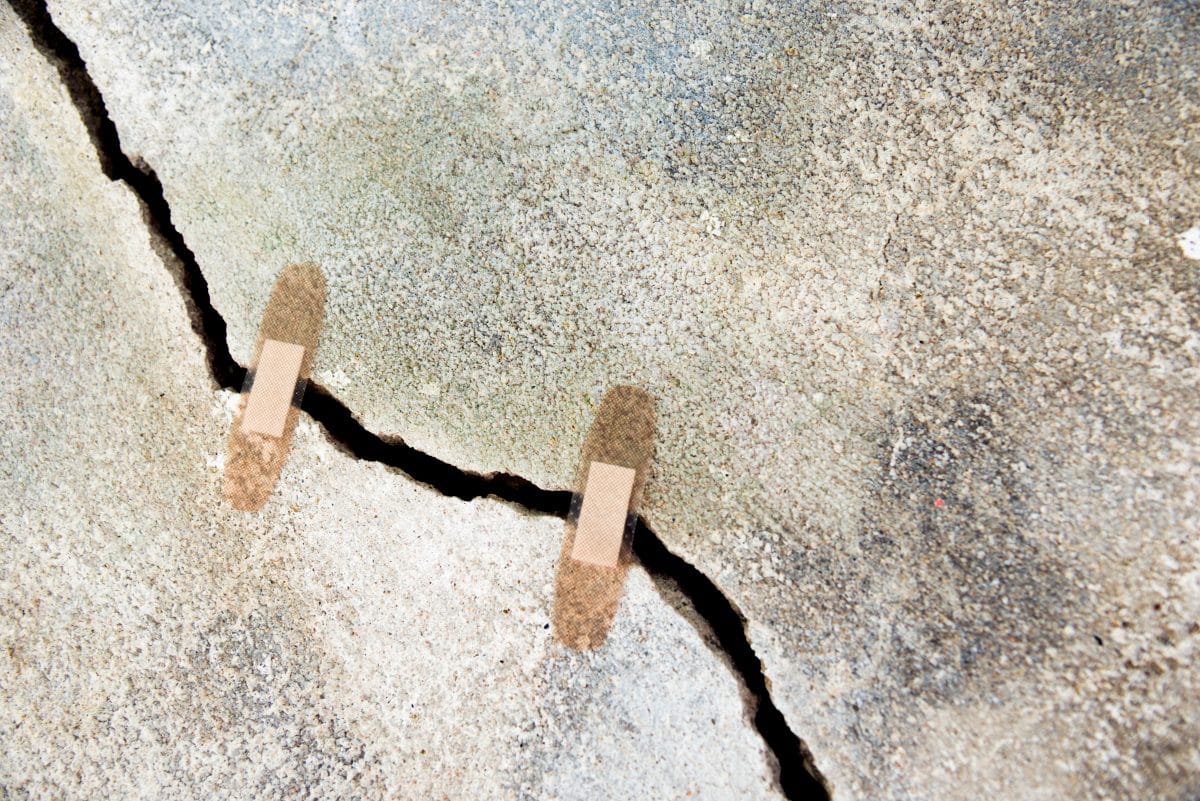In the construction industry, concrete is one of the most durable materials. It withstands environmental elements, upholding an abundant amount of weight, and resisting other destructive influences while maintaining structure. Being one of the most durable materials; why does concrete experience abrasions, cracks, spalling, and other negative impacts? Over time concrete is bound to need a bit of maintenance. We will be going through the most common flaws concrete might face, some of the causes, and concrete repair solutions.
Flaws concrete might face
Cracked concrete- there are many reasons as to why concrete cracks and a variety of different cracks it may experience. Concrete cracks may be a result of adding an excessive amount of water during production. Excessive amounts of water can impact strength. Cracks may appear due to the evaporation of water, causing shrinkage. Heat, rapid drying, and pouring during harsh weather climates with no climate measures can result in cracked concrete.
Concrete can experience some of the following cracks- expansion cracks, hairline cracks, settlement cracks, shrinkage cracks, and structural cracks.
Spalling- the use of sodium chloride during winter months, water seeping through concrete structures, or during the curing process can cause spalling. Concrete can peel, break off, or flake, causing crumbling and exposing aggregates. Therefore, damaging the structure of the architecture or concrete product. Mainly aesthetic; however, exposed aggregates can lead to further moisture damage.
Discoloration- this is purely aesthetic, unlike spalling. Discoloration occurs when there are environmental changes in weather, calcium chloride added to speed setting time, the inconsistency of water, and material. The solution for discoloration is simple and does not require much work.
Crazing- similarly to discoloration, crazing is an aesthetic issue that poses no real threat to the concrete foundation. Thin imperfections, resembling crawling delicate veins amongst the concretes surface.
Repair solutions
Cracked concrete– depending on the severity of the crack and on which surface will determine which solution is best to use for repairs. A concrete filler (concrete repair kits), Portland cement, and water or caulking can all be great solutions. Before applying any concrete crack repair solution, prepare your work area by cleaning any debris and removing any crumbling pieces. Keep in mind that the crack’s size will determine if you need to extend the cracked area by demolishing some of the surface.
Spalling– the first step in repairing spalling concrete would be to clean the area of any debris and remove any loose pieces of concrete. Once the site is free from dirt and debris, applying a surface layer (polymer-modified concrete coating) can patch up any imperfections. If the damage is too far gone, then it must be demolished and reconstructed.
Discoloration- giving the concrete a good power wash and scrubbing the spots can help remove discoloration. Many chemical acid washes can be used as well. If there are unsightly markings, then applying a concrete stain will do the job of covering it up.
Crazing- Not much can be done once crazing occurs. Sealers can be applied; however, it will not diminish the appearance. Most of what can be done are during the pouring and curing process. Think of crazing as added character to your finished product.
Whenever you are unsure which product or solution is best to repair cracks, abrasions, or unsightly markings, call upon your concrete pouring professionals at Stouffville Mobile Redimix.

